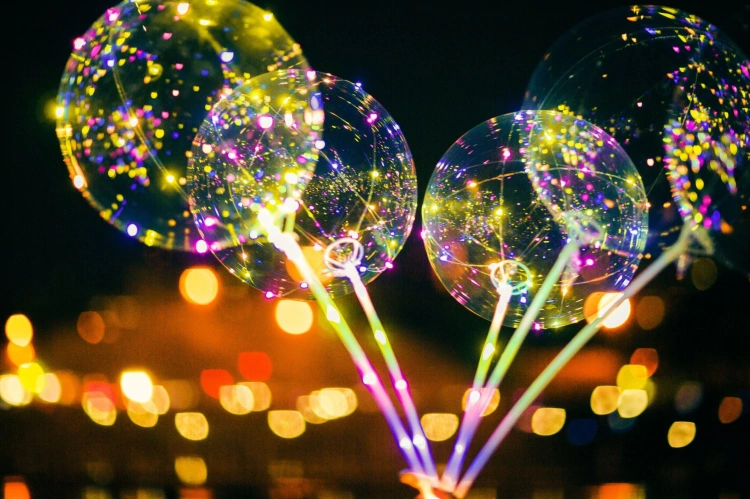Are LED lights really that bad for your eyes?
12 August 2021

Lighten up! It’s not all bad news…
LED lights have been around since 1962 and are known for being a much more environmentally friendly alternative to traditional incandescent light bulbs. On top of being more energy efficient, they’re also more cost effective and can light up any room in a variety of colours. It might sound too good to be true, and that’s because it is! Recent studies have shown that LED lights emit blue light that can damage our eyes. However, the effects of LED lights are not too damaging as long as your screen time is kept in moderation.
So what are LED lights?
Here comes the technical bit!
LED lights differ from traditional incandescent bulbs in the way they produce light. While traditional light bulbs pass electricity through a thin wire filament, LEDs use a semiconductor that produces light when electricity passes through it. This method of producing light is also different from regular energy-saving light bulbs which pass energy through mercury vapour to create UV light. The UV light is then absorbed inside the lamp by a phosphor coating, and this is what makes the light bulb glow.
Are LED lights harmful to our eyes?
According to a report by The French Agency for Food, Environment and Occupational Health and Safety (ANSES), the blue light emitted through LED lights can damage the retina in the eye. It can also disrupt our body’s natural circadian rhythm, as the blue light from your devices signal to your brain that you need to be awake when you want to sleep.
The report claims that exposure to an LED light is ‘phototoxic’ and can eventually lead to an irreversible loss of retinal cells and reduced sharpness of vision. Chronic exposure to LED lights can speed up the ageing of retinal tissue, leading to a decline in visual acuity and an increased risk of eye diseases such as age-related macular degeneration (AMD). As well as causing potential retinal damage, LED lights can induce headaches, visual fatigue and increase the risk of accidents, according to the ANSES report.
Do LED lights cause eye strain?
Eye strain is unfortunately another downside to using LED lights, as they’re known to trigger issues for people with existing medical conditions associated with migraines and seizures. This is because LEDs produce an incredibly faint flicker, so fast you wouldn’t notice it! This means that most people are unaffected, so it’s unlikely you will suffer from eye strain or fatigue, headaches and seizures unless you are highly sensitive and prone to these issues.
How can we protect our eyes from LED light?
There are a few ways you can protect your eyes from overexposure to blue light as much as possible, and these will ensure the LED lighting in any devices you use will not cause you too much harm. Some of the methods you can use include:
- Reducing screen time: Try to decrease the amount of time you spend in front of LED lights, including devices such as your smartphone, computer, or TV screen. Make sure you take frequent breaks to give your eyes a rest and avoid looking at screens for too long – at least 2-3 hours before going to bed.
- Purchase ‘warm white’ LED lights: The ANSES report also recommends using LED lights that are ‘warm white’ rather than ‘cool white’, as these lights emit less blue light which in turn reduces the potential damage to your eye health.
Are LED lights better for your eyes than fluorescent lights?
Fluorescent light bulbs tend to emit UV radiation and can cause the most damage to your eyes, more so than blue light produced by LED light bulbs. LED lights do not produce any UV rays, and as they come in a variety of colours, they can also produce warm light (as mentioned above).
Compact Fluorescent Lights (CFLs) are another option – CFL bulbs produce fewer UV rays than incandescent and fluorescent light bulbs. CFL bulbs do contain mercury which can be harmful, however, it’s a much smaller amount in comparison to fluorescent bulbs. LED lights are less damaging to your overall eye health provided you pick warmer coloured lights over cooler ones, as there is significantly less blue light and no UV rays produced at all.
If you’re in two minds about whether or not you can decorate your home with some LED lights, rest assured that the risk of serious eye damage is low! As long as you take the necessary precautions to protect your eyes (including reducing screen time and buying ‘warm white’ lights), it’s unlikely that your eyes will be damaged from short-term LED exposure.
Back to Blog
